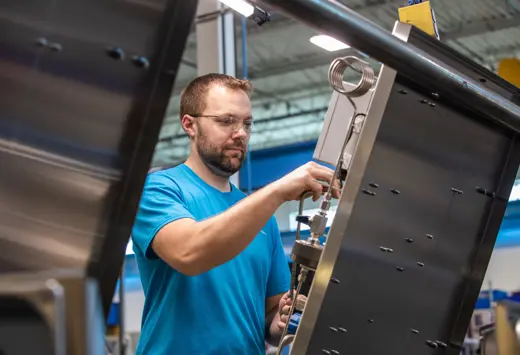
Employee Ownership
Become an Owner
Since 1986, Sentry Equipment has been 100% owned by its employees. This means that employees are empowered to think like business owners and directly impact the company's success. But beyond our commitment to each other, it means we are committed to supporting our employees retirement through an Employee Stock Ownership Plan.
What is an ESOP?
Traditionally, an ESOP is used as a future investment in the company and a way for owners to establish succession planning. However, at Sentry Equipment it is a tool for our stability and growth. Employee owned companies are 18% more likely to report an increase in profits and 4x as likely to retain staff even during rough times according to the National Center for Employee Ownership. But don't take our word for it! Learn more about ESOPs from the Employee Ownership Expansion Network
The Benefits of Employee Ownership
Being an employee-owner provides Sentry employees with so much more than a strong financial future. Explore how employee ownership makes a difference beyond retirement.

ESOP Economic Power
According to the National Center for Employee Ownership, ESOPs hold so much more than financial economic power. Learn more in this infographic from NECO.
Economic Power of ESOPs
Culture & Communication at ESOPs
Employee-owned companies are often known for having inclusive cultures and Sentry is no exception. Learn how the ESOP culture makes a difference.
View Video.JPG?height=760&width=505&rmode=crop&ranchor=center&format=webp)
ESOPs in the Real World
Sometimes employee ownership is hard to understand unless you work for an ESOP. However, NECO put together a group of case studies to help bring light to its application
Explore Case Studies
Becoming Fully Invested
Sentry Equipment's ESOP investment schedule is on a six year vesting schedule. After six years of continuous employment, you will have access to the total amount of your account if you leave or retire. However, if you leave before completing 6 years of vesting, you are entitled to the following % of your account:
- < 2 years of service - 0%
- 2 years of service - 20%
- 3 years of service - 40%
- 4 years of service - 60%
- 5 years of service - 80%
Regardless of longevity of service, though, each employee owner receives the financial benefit of company longevity, employee satisfaction, and much more.

